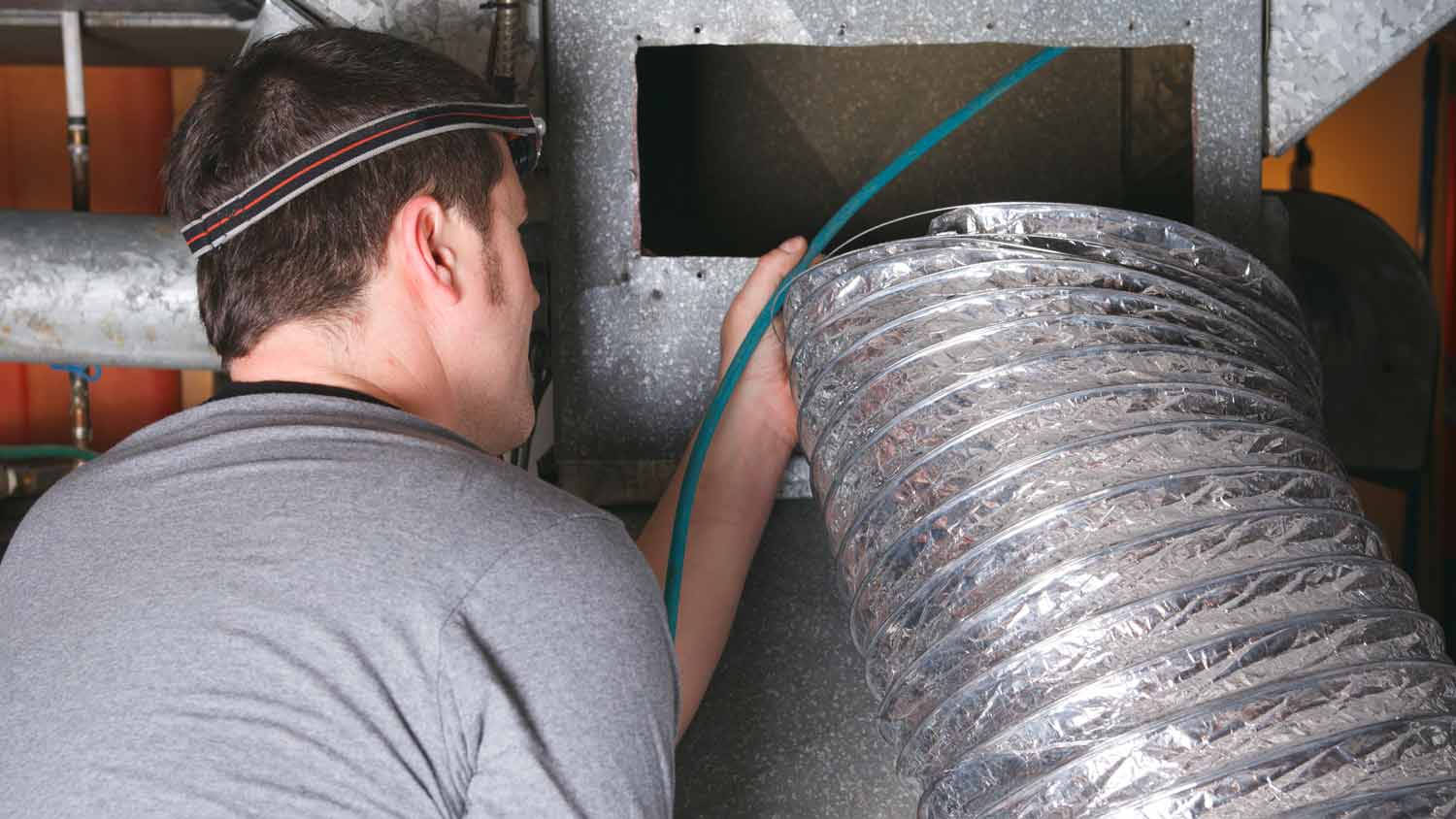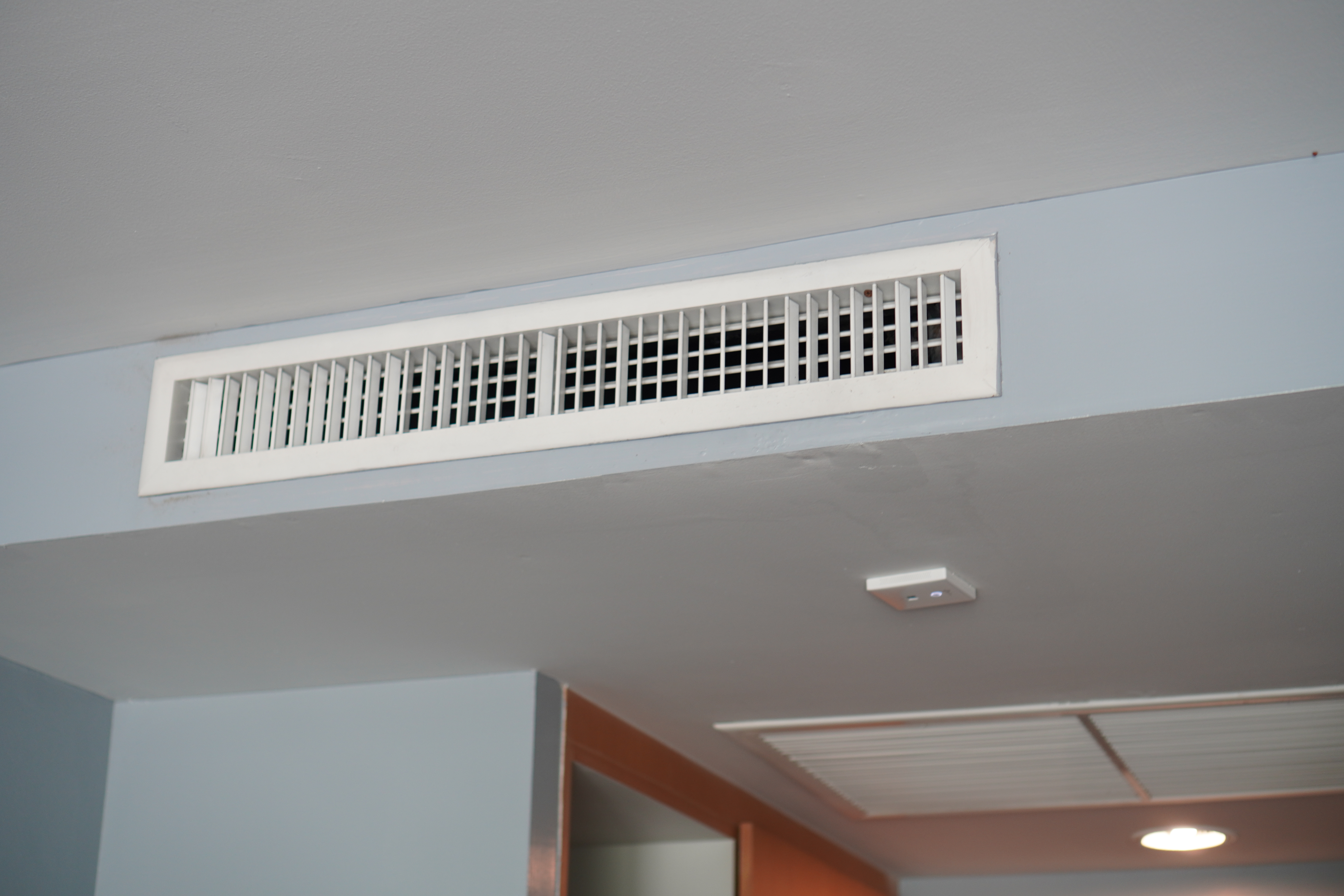
Curious about air duct cleaning costs? Get insights into pricing factors, benefits, and how to tell when it’s time for a good cleaning.
Don’t let asbestos hide in older air ducts


Your ductwork carries air from your HVAC through the air ducts to every room of your home.
In homes and buildings built before the 1980s, it was pretty standard to have asbestos paper to line and insulate ductwork.
Damaging products containing asbestos allow them to become airborne, where you can breathe them in.
Over time, as your body absorbs this, it can create a dangerous situation called mesothelioma, an aggressive cancer that’s difficult to treat.
HVAC technicians, construction workers, and people doing DIY projects on older homes are more susceptible to asbestos.
Your air ducts are some of the most critical components of your HVAC system because they’re responsible for the air you breathe. Unfortunately, buildings and homes with HVAC systems predating the 1980s could be more susceptible to asbestos in the air ducts. Our guide covers asbestos in the air ducts, how to remove it, and tips for keeping your ducts clean.
Your air ducts are the veins of your HVAC system, carrying cool air through the ducts and out the supply air vents in your home. It’s also responsible for gathering warmer air in your environment, pulling it back in through return air vents, and drawing the air through your air ducts to remove the warmer molecules. As you can imagine, having clean air ducts goes a long way to breathing cleaner air. However, if you have a system that predates the 1980s, it’s possible asbestos could be in your air ducts.
Asbestos is a mineral fiber found in older HVAC air ducts. This happened because older systems used asbestos paper to line and insulate pipes. Asbestos is found in duct dampers, lagging cloth, and duct wrappings.
At the time, asbestos had many attractive features. It was cheap, so HVAC companies could insulate many pipes for less cost. Also, it was easy to use, was heat resistant, and even provided soundproofing features.
However, with the dangerous health effects asbestos delivers, HVACs changed to stop featuring this fibrous material in duct dampers, insulation, and other components.
If you have an older building or home with an HVAC system that hasn’t been updated since the 1980s, it is best to hire a local asbestos removal service. You don’t want to do this yourself as when asbestos materials get damaged, it makes the material airborne, which could be ingested by yourself and anyone else working on the removal.
Meanwhile, these companies know all the safety procedures to ensure safe removal with no residue. On top of this, you’ll want to consider hiring an HVAC technician to update your building or home’s system. They can help you answer questions like what is the most efficient ductwork. They also find creative ways to hide your ductwork within the context of your overall design and the different types of ductwork that work best for your home.
One of the most dangerous aspects of asbestos is you can ingest it and not have any signs or symptoms for years. When someone ingests them, they glue to your body’s natural lining. Over time, this creates a mutation in the cells, turning normal, healthy cells into cancerous ones. Symptoms such as fluid buildup (pleural effusion), stomach pain, and shortness of breath can occur when this happens.
It can also result in severe health impairments, like lung cancer, mesothelioma, and asbestosis, which is a progressive form of lung disease. Many diagnosed with mesothelioma have less than a year to live. That’s why it’s imperative to have a company specializing in asbestos removal handle the project for you, as it can help you prevent these terrible diseases.

If you have a newer system, you’ll still want to do maintenance to ensure you’re breathing the cleanest air you can. You’ll only have to do some of these tips once or twice per year, whereas, with others, you’ll want to do them monthly.
Your air filter is your HVAC’s first point of contact with your environment. As such, it’s responsible for trapping particles, dust, dander, mold, pollen, and mildew, depending on the capabilities of your air filter. However, if you don’t change it over time, you could see particles build up in your ducts, as your clogged air filter can’t trap these irritants anymore. Therefore, change your air filters as directed by your manufacturer.
Inspecting your air vents can give you an idea of your HVAC health. If you’re wondering how to stop condensation on air vents, chances are you have a leak. Condensation happens when warmer air from the outside combines with the cooler air in the ductwork. Also, if you notice particle buildup on your air vents, it could signify your ductwork needs cleaning.
If you see your air vents becoming dirty often, it could indicate your ductwork has a leak or needs cleaning. On the former end, the average air duct cleaning costs around $379. Remember that your local duct cleaner will first determine the cause for your ductwork becoming dirty, as there could be other culprits, like pest infestation or poor insulation.
Along with the cleaning, do a DIY duct leakage test. With this, turn on your HVAC and find your exposed ductwork. Next, run your hand over them, and when you find leaks, seal them with duct mastic.
HVAC systems last on average from 15 to 25 years. Once you’re near the end of its operational life, you’ll want to compare replacement costs with several different HVAC companies. Doing this lets you secure the best deal while helping replace outdated ductwork. In turn, you’ll breathe cleaner air, have a more efficient system, and could save money on energy bills.
From average costs to expert advice, get all the answers you need to get your job done.

Curious about air duct cleaning costs? Get insights into pricing factors, benefits, and how to tell when it’s time for a good cleaning.

Whole-house air purifier costs depend on a variety of factors, including your home’s size and layout. The type of purifier you choose matters, too.

Learn why it's best to call the pros who know how to remove rust from air ducts and fix underlying issues rather than trying to handle this problem yourself.

Preparing for air duct cleaning will make the job go much smoother. Learn about the steps you should take before a pro starts cleaning your ducts.

Air duct sanitizing removes bacteria, viruses, and pathogens from ductwork to help reduce the risk of getting sick from your home’s air.

A blocked air duct can impact indoor air quality and raise energy bills. Learn how to check for blocked air ducts with these easy DIY methods.